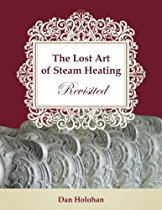
The Glitch
Overview:An old New England home has been heated with a two-pipe steam system serving plenty of sturdy cast-iron radiators. As part of an extensive renovation and insulation upgrade, the owner decides to upgrade the heat and convert the system to a high-efficiency, gas-fired condensing boiler. The piping system installed by the local plumber is shown below. It leaves as much of the two-pipe distribution in place as possible.Exercise:What are some design details that you think are incorrect or missing?

The Fix
Over decades of use, lots of “mud” can build up in a steam heating system with cast-iron radiators. It’s really a shame to push that mud into new portions of the system, and especially into the compact heat exchanger of the new boiler. I’d recommend a high-quality dirt separator on the receiving end of the flowing mud, and installed at a low point in the piping whenever possible.Be sure to leave room for a blow-down valve at the bottom because you are sure to be using it. Also be sure the flow velocity into the dirt separator is at or less than 4 feet per second. A hydraulic separator could also be used in place of the closely spaced tees, air separator and dirt separator.
Another problem is the arrangement of the circulator in the boiler loop. It should be pumping into the condensing boiler (because the latter has a high-flow-resistance heat exchanger).
Other details that are incorrect:






